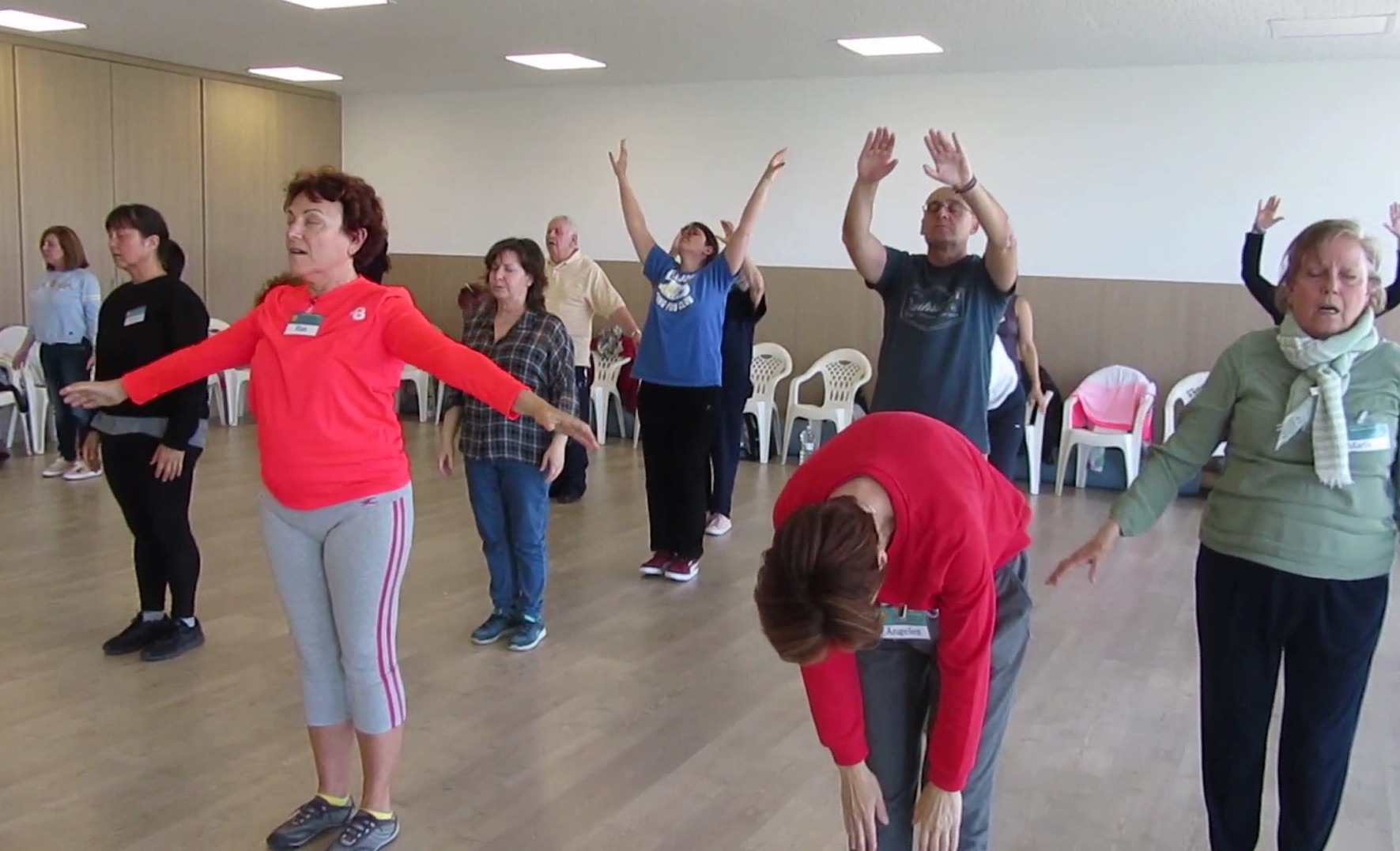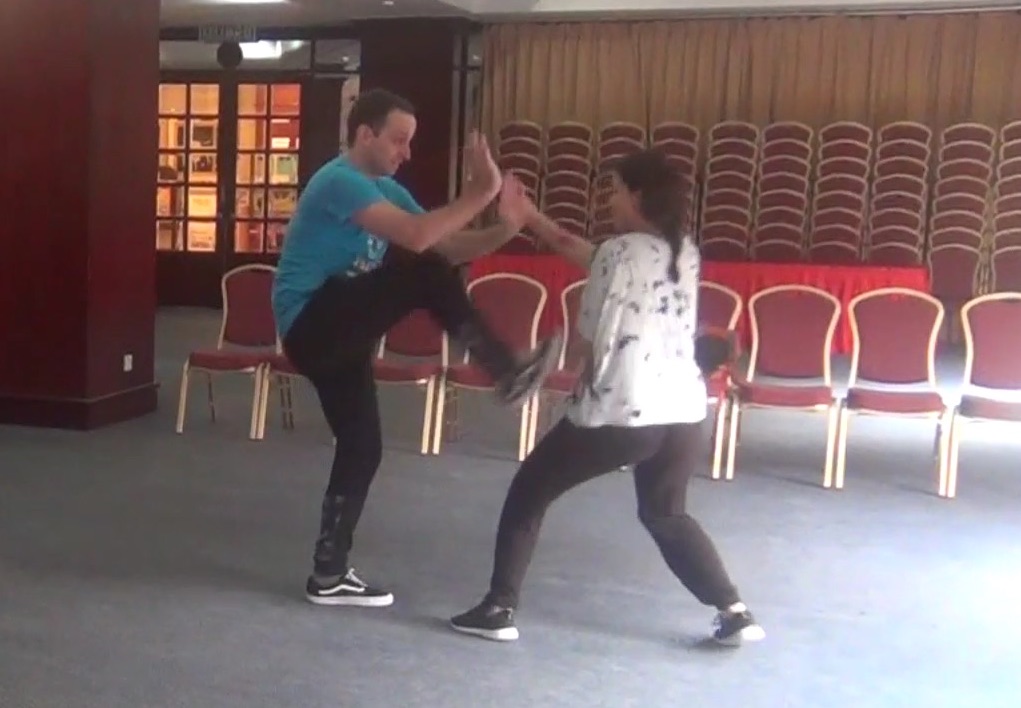THE TEN ESSENTIALS OF TAIJIQUAN FOR EVERYBODY

It is precisely because many people cannot empty their mind of all thoughts that they do not derive benefits from chi kung although they have practiced the art for many years
Question
How could a practitioner of other styles of Kungfu other than Taijiquan benefit from following the Ten Essentials in Wudang Kungfu practice? Does such a practitioner need to be of a high level or can a beginner benefit as well? Is it possible and how can one benefit from following these Ten Essentials to enrich ones daily life?
Sifu Angel Guillermo, Shaolin Wahnam Puerto Rico
Answer
It is worthwhile to remember that at the time of Zhang San Feng in the 13th century, what he practiced was Shaolin Kungfu. It was called Wudang Shaolin Kungfu to differentiate it from Henan Shaolin Kungfu practiced at the northern Shaolin Monastery at Henan which started at about 6th century. Wudang Shaolin Kungfu was later shortened to Wudang Kungfu.
Wudang Kungfu was earlier than southern Shaolin Kungfu at Fujian Province from the 17th century, by about 4 centuries, which is longer than the histories of many martial arts today.
We should also realize that there are two main types of Wudang Kungfu today, one initiated by Zhang San Feng at the end of the Song Dynasty, and the other initiated by Fong Tou Tuck in the Qing Dynasty, separated by more than 500 years. Both were derived from Shaolin Kungfu. The Wudang Kungfu of Zhang San Feng, which is more popular, is relatively “soft”, whereas the Wudang Kungfu of Fong Tou Tuck, which is relative unknown, is “hard”.
The term “Taijiquan” (Tai Chi Chuan) was introduced in the 17th century by Chen Wang Ting who used the principles of yin-yang to describe the philosophy of his martial art.
As Shaolin Kungfu is the greatest martial art, the Ten Essentials in Wudang Kungfu are beneficial to any style of kungfu other than Taijiquan. In fact they are not only beneficial to all martial arts but also beneficial to life.
The Ten Essentials of Wudang Kungfu advocated by Zhang San Feng are as follows:
- Empty your mind of all thoughts
- Do not tense any muscles
- Loosen your waist
- Principle of false-real
- Principle of sinking and pressing
- Using intention and not using strength
- Co-ordination of top and bottom
- Integration of internal and external
- One gentle, graceful flow without any break
- Movement in stillness, stillness in movement
“Empty your mind of all thoughts” and “Do not tense any muscles” are essential conditions to enter into a chi kung state of mind, or entering into Zen or Tao. In Western culture it is entering into a heightened level of consciousness. I discovered them while teaching chi kung to the public, confirmed by the great modern chi kung master from China, Sifu Yan Xin, who first used this term. Later when I taught Shaolin Kungfu, especially in overseas courses, and other types of kungfu including Taijiquan, I found these two principles as well as other principles very useful for teaching triple cultivation, i.e. cultivation of body, energy and spirit.
“Empty your mind of all thoughts” and “Do not tense any muscles” are the very problems faced by most people today, including those who do not practice any martial art. Most people are stressed by myriad thoughts coming to their mind at all time. Most people are tensed without their knowing. Hence, by practicing Wudang Kungfu, which pays much attention to these two principles, one can overcome these two problems.
Most other people who practice other styles of kungfu as well as other martial arts tense their muscles. They believe that if they do not tense their muscles they will not have strength. They do not know -- both the knowledge and the ability -- how to use internal force. Indeed, we in Shaolin Wahnam are amongst the very few in the world to have this knowledge and ability. We are so used to emptying our mind of all thoughts and not tensing any muscles that we sometimes forget this fact.
“Loosening the waist” became noticeable when I started teaching Taijiquan. This principle, of course, helps me tremendously in my kungfu performance as well as in daily life. I believe that in my student days my waist was rigid when I practiced Shaolin Kungfu.
I understood the “principle of false-real” when I practiced Shaolin Kungfu. “Sounding the East and Attacking the West” is a very important principle. I appled this principle when I used no-shadow kicks.
“Principle of sinking and pressing” became prominent when I taught Taijiquan. I remember that I was puzzled by “remaining in the middle”, which is one of the 13 techniques of Taijiquan. Then I discovered that it involved body-movement, especially sinking.
Pressing became prominent recently in my kungfu teaching, though I might have used this principle unconsciously in my early years when sparring with other people. The ever-victorious strategy to apply a trained combat application on an opponent involves pressing.
“Using intention and not using strength” was emphasized when I taught Taijiquan informally. It was particularly important when I taught “Lifting Water” to Ken, a student in Australia who was also a Taijiquan instructor. I specifically asked him to have an intention of chi flowing to his hands when dropping his arms, and chi flowing into him when raising them. It produced tremendous result. I might use intention in my Shaolin student days, like striking or kicking an opponent, but it was not emphasized.
“Co-ordination of top and bottom” is important in all styles of kungfu, but it is especially emphasized in Wudang Kungfu of Zhang San Feng, which is called Taijiquan today. It is expressed as whole body movement, like in shoulder strike or elbow strike. In other styles of kungfu, like in Shaolin Kungfu, only the hands move, like in “Beauty Looks at Mirror” and “Fierce Tiger Speeds through Valley”.
“Integration of internal and external” reminds us that in internal styles like Taijiquan, external form is also important. It is the external form that gives internal meaning. For example in a palm strike, it is the internal force that damages an opponent, but without the external form of the palm strike, one cannot use his internal force. This principle, which is one of the 10 Essentials, is particularly significant in Wudang Kungfu and brings out the best in any external style, like Karate and Taekwondo.
When I learned form Uncle Righteousness, my patterns were staccato, as I had to pause for Uncle Righteousness to check my form. When I learned from Sifu Ho Fatt Nam, he asked me to perform a sequence of many patterns in one flow, manifesting the principle of “One gentle, graceful flow without any break”.
Later I read that “Chang Quan”, or “Long Fist”, is so called because it resembled the long river, or Yangtze Kiang, where waves after waves flow continuously. It reminded me that not only in Taijiquan but also in Shaolin Kungfu and other kungfu styles that it was important to have one graceful flow of patterns. When I formulated the ever-victorious strategy, this principle was very important.
“Movement in stillness, stillness in movement” is particularly important in Wudang Kungfu or Taijiquan. But I was aware of this principle in chi kung as I often read about this principle in classics. When we perform a chi kung movement, like Lifting the Sky, there is obvious movement, but the mind is still, which means calm and clear. When we perform a series of kungfu patterns, the mind is still. On the other hand, in Abdominal Breathing, for example, the external form is still, but the chi if flowing. When we perform stance-training, the form is still, but the energy is flowing.
Hence, even when practitioners learn other styles of kungfu other than Taijiquan, or other martial arts, they can benefit a lot from the Ten Essentials of Wudang Kungfu. Indeed, many kungfu practitioners and other martial artists as well as many other people tense their muscles and stress their mind with myriad thoughts. If they can learn just the first two of the 10 Essentials of Wudang Kungfu, they would have benefited a lot.
Participants of any one of the Wudang Kungfu courses need to have some prior kungfu experience. If they are total beginners, they need to learn from any one of our kungfu instructors first. I shall not, for example, teach stance training and basic kungfu movements in any of the Wudang Kungfu courses.
Students can learn the 10 Essentials of Wudang Kungfu, but they will not be able to put the essentials in practice. All the essentials are skills, and skills need to be learn from a living teacher.
Let us take the first essential, “Empty your mind of all thoughts”. It is precisely that people cannot empty their mind of all thoughts that they become stressful. It is a very common problem faced by most people. Our Shaolin Wahnam students are indeed very lucky. Everyone of our students can empty their mind of all thoughts.
My teaching is multi-level. This means that relative beginners will benefit from the course more because there are advanced students present, but the more advanced a participant is, the more he will benefit.
The 10 Essentials are not just for kungfu and other martial arts; it is for daily life. If we can understand and put into practice the 10 Essentials, our daily life will be much enriched.
Let us take just two examples, “Using your waist” and “Using intention and not using strength”.
When we turn round to look behind, we do not turn the whole body; we use our waist. Imagine how difficult it would be for people whose spinal bones are fused. We can also use our waist in another way. Suppose you need to carry some heavy object. Bend down, hold the heavy object with your fairly straight hands, then use your waist. It is much easier than trying to lift the object with your hands.
We are quite familiar with the saying that “the pen is mightier than the sword”, which is another way of saying use intention and not strength. But “strength” here is not muscular strength; it is internal force. By using intention, you can generate energy, or chi, to flow to your hands or whatever parts of your body to do your jobs.
If you want to turn on a switch of a light, or to lift a kettle, use intention instead of muscular strength. You will let chi instead of strength do the work for you. I learned this many, many years ago when I taught chi kung, from a student who also learned Taoism.
When you want to go up the stairs, walk along a street, play games or do any work, use intention instead of strength. You will find chi will do the work for you, without you being tired or panting for breaths. You may need some practice, but you can be successful. The Wudang Kungfu courses are good places to practice.

Performing a series of patterns in one continuous flow is very important in both attack and defence
The questions and answers are reproduced from the thread Questions to Grandmaster on Wudang Kungfu/Taijiquan & Zhang San Feng in the Shaolin Wahnam Discussion Forum.
LINKS
